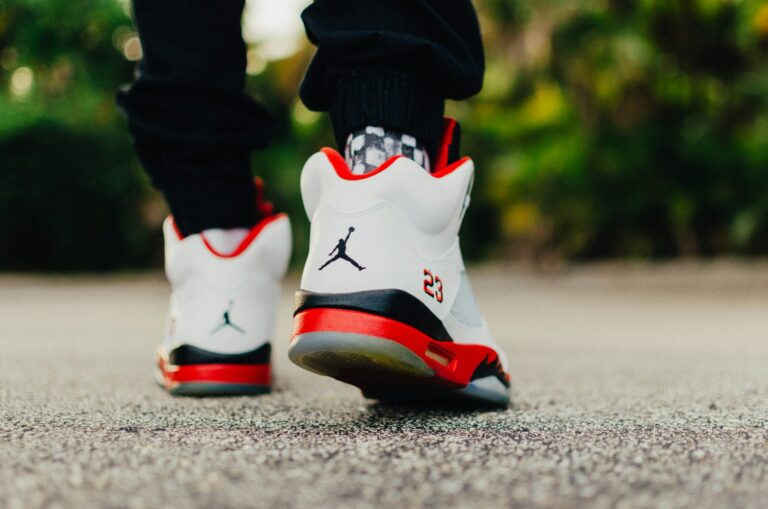Did you know that brands are basically promises to their audiences about what they can expect?
Surprisingly, many businesses forget to define and manage these promises clearly – which can cost them loyal customers, hurt their brand image, and affect their business.
If your organization hasn’t defined a clear promise for its brand, it’s time to change this. This article will guide you through what brand promises are, where they fit in the brand strategy, and how to create clear and effective ones.
Proven Systems for Business Owners, Marketers, and Agencies
→ Our mini-course helps you audit and refine an existing brand in 15 days, just 15 minutes a day.
→ The Ultimate Brand Building System is your step-by-step blueprint to building and scaling powerful brands from scratch.
Table of Contents
1. What is a Brand Promise?
A brand promise represents what people can always expect from a brand’s products, services, and overall actions, whether stated directly or implicitly.
It acts like an invisible contract between the brand and its audiences, representing the value and experience that the brand should always deliver, no matter what and at any point in time.
A brand promise must always be delivered and be present in every action and aspect of the brand, as well as the organization behind it.
To better illustrate this concept, let’s look at some real-life examples of brand promises:
- AUDI: Sporty vehicles, high build quality and progressive design
- Lush Cosmetics: Fresh, vegetarian, and handmade cosmetics with limited packaging and no animal testing
- UNICEF: “UNICEF works day-in day-out in the world’s toughest places to reach the most vulnerable and disadvantaged children”
This video is a preview of our branding course, The Ultimate Brand Building System
2. Should It Be Customer-Focused?
While a brand promise is usually defined with the brand’s ideal customers in mind, it shouldn’t be solely customer-focused.
Brands belong to society and have the power to affect various stakeholders, including employees, investors, shareholders, partners, suppliers, distributors, competitors, governments, local communities, the general public, and nature. All these groups have needs and expectations that the brand should consider – and failing to respect these could severely damage the brand’s reputation.
Also, consumers and other stakeholders may interpret the brand promise unconsciously. If their expectations are not met, they might feel truly disappointed. When brands take control of their promise, they reduce the chances of dealing with misinterpretations and create better relationships with their different audiences.
3. Why Is a Brand Promise So Essential in Strategic Branding?
A brand promise is essential for several reasons – here are the most important ones to keep in mind:
1. A compass for navigating brand decisions
A clear brand promise helps guide all actions taken by the brand. It supports decision-making and makes the brand’s positioning and value proposition easier to implement. When everyone in the organization knows what the brand must deliver, the actions and messaging become clearer and more consistent.
2. A guardian of the brand’s reputation
Since consumers and other audiences may interpret the brand promise unconsciously, it’s always a good idea to take control of these expectations and clarify what the brand is going to deliver, no matter what. If a brand promise is based what the organization is capable to deliver, and clearly communicated to everyone, then there’s fewer risks of facing unmet expectations which can lead to disappointment.
3. A tool for building trust and loyalty
When a brand constantly delivers its promise, different audiences start seeing it as reliable and trustworthy. Over time, this makes it easier for customers to choose the brand, boosting customer loyalty and potentially leading to more sales.
3. An invisible contract that determines success or failure
A brand promise acts like an invisible contract that can affect a brand’s success or failure. One major benefit of a strong brand promise is that it helps organizations earn the trust of their different audiences, especially customers. But brand promises also come with a significant risk: if a brand fails to keep its promise, it can seriously damage or even ruin its reputation. Unlike people, brands often don’t get second chances. That’s why having a clear brand promise is crucial—it helps brands stay in control and protect their image over time.
“Each brand should be seen as a contract. It binds, promises and engages each side: the company and its clients. The brand expects loyalty from consumers but it must in turn be loyal to them.”
Jean-Noël Kapferer
4. Where Does the Brand Promise Fit Within Your Brand Strategy?
Defining the brand promise during the brand strategy development process
A brand promise can be defined at any point in time, and deciding where it fits within your brand strategy is a personal decision that can vary according to the chosen methodology.
Our recommendation, which is part of what we teach in our branding course, is to start by conducting solid market research about your brand’s environment, capabilities, and ideal customers. Next, define your brand’s essence—its purpose, vision, mission, and values—which represents its heart and soul. With this analysis and information, you can establish your brand’s positioning strategy in its market and define the value proposition.
This is the perfect moment to define your brand’s promise, as it should align closely with the insights gained from your research, the essence of your brand, and its positioning strategy.
A well-defined brand promise reflects what your brand stands for and what it commits to delivering to its customers.
Difference between brand promise, brand value proposition, and brand positioning
Many people wonder what’s the difference between a brand’s promise, value proposition, and even positioning. This is a natural question, and if you’ve been wondering the same, don’t worry—you’re not alone.
While the three concepts revolve around the unique value the brand delivers to its audiences, they are still different things. In short, they can be defined via the following questions:
- Brand Positioning: How would you like the brand to be perceived compared to other competitors in the market?
- Brand Value Proposition: What unique benefits or value will your brand provide to its audiences that they cannot find elsewhere?
- Brand Promise: What is your brand going to deliver?
5. Simple Steps for Defining a Strong Brand Promise
To create a strong brand promise, brands must answer the critical question: What is the brand going to deliver, no matter what?
Step 1: Start by defining a customer-focused brand promise
To define the brand promise, we recommend completing the previous steps of the brand strategy, as mentioned in the preceding section. With this information and analysis, you can define the promise by simply answering the following questions in one or two sentences: What do my ideal customers expect from my brand? What exactly will my brand deliver to my ideal customers, at any point in time?
Here are some fictive examples of how a brand promise can look like:
• “A secure and friendly co-working place, open 24/7 – guaranteed”
• “Organic make-up products for any skin tone”
• “Real and verified vintage clothes at an affordable price”
Our key advice here is to avoid making promises that you cannot deliver on. A brand promise that is not delivered is a clear danger to the brand’s reputation.
Step 2: Adapt the promise to the remaining stakeholders
In this second phase, review your brand’s promise and ask yourself: does the brand promise also apply to the brand’s remaining stakeholders?
Go through each stakeholder category (for example, employees, partners, investors, local communities). If the brand promise doesn’t apply to them, adjust it by clarifying what you need to always ensure and deliver to these remaining audiences.
Your brand promises should inspire confidence and set clear expectations by being something your brand will clearly communicate, and actually deliver.
Checklist to help you find a great brand promise:
A strong brand promise should be:
- Aligned with the brand’s essence, positioning strategy, and value proposition
- Needs-based
- Simple
- Clarify what the brand can and cannot do
- Easy to deliver
- Unique
- Measurable
6. How to Ensure Your Brand Promise Is Always Delivered
As mentioned earlier, consistently delivering on your brand promise is essential to protect your brand’s reputation. Here are some tips to ensure your brand always keeps its word:
#1 Base your promise on organizational capabilities
To ensure your brand promise is consistently delivered, it should be based on your organization’s actual capabilities. This means understanding what your team can realistically achieve based on the organization’s strengths, weaknesses, and resources.
It’s important to conduct this analysis in a raw and unfiltered way. Being honest about what your brand can achieve ensures the promise is realistic.
#2 Align your team with the brand promise
It’s essential to align everyone in the organization around that promise. This includes all departments—sales, customer service, marketing, HR, and more—so that everyone understands and supports the brand’s commitment.
Hold regular meetings and share clear information with everyone involved in the brand to ensure they understand the brand’s promise and how it’s been adapted to different audiences.
For example, you can explain the brand promise to the sales team and provide them with a checklist of important points to keep in mind during their sales pitches. You can do the same for creative agencies you work with, as well as other internal teams like human resources, who represent the brand to employees and job candidates, or the ESG team, which focuses on how the brand impacts communities and the environment.
#3 Create a consistent brand experience
Every interaction people have with your brand should uphold your promise, whether they’re opening your product’s packaging, reading your website, engaging with your Instagram stories, applying to a job, or speaking with a sales representative.
Meeting your brand’s promise should be something that is done consistently and a baseline for your brand’s action. Then, everything that is added to the experience is a plus that can make your brand’s experience even more memorable.
#4 Monitor and adapt your promise over time
Our last piece of advice is to set up a system to monitor and possibly adjust your brand promise over time. Market conditions and customer expectations are always changing, so your brand promise might need updates to stay relevant.
To measure your brand promise, you can consider using methods such as customer surveys, online reviews and social media monitoring, customer support feedback, sales data analysis, online reviews, focus groups, or employee feedback.
Try to collect feedback regularly and ensure that your promise meets your audiences’ needs so that you’re aware of where you can make an adjustment if needed.
#5 Handle mistakes with transparency and extra care
But what happens when a mistake occurs, or when the promise hasn’t been met at some point? Mistakes can happen to any brand, and it’s important to address these situations quickly and openly, not just with your customers but also with other stakeholders like employees, partners, and the community.
When a problem arises, apologize and communicate honestly about what went wrong and what steps your brand is taking to fix it. For example, if a software update causes problems for users, send out a message explaining the situation, outline how you are working to resolve the issue, and provide a timeline for when they can expect a fix.
And in addition to fixing the mistake, why not going the extra mile to show that you care? This could mean offering affected customers a month of free service as a compensation, or providing employees with days off to boost morale after a challenging period. You might also host a community event to apologize for any disruption caused and invite feedback on how you can improve the brand’s actions.
By going the extra mile, you can turn a disappointing situation into an opportunity to strengthen your brand and show that you really value everyone involved with it.
Conclusion
Whether you decide to define your brand’s promise or not, people will unconsciously expect things from your brand—things that were implicitly communicated by your organization.
Defining a clear promise that can be easily communicated and executed at any point in time is a way to take ownership of these expectations and protect your brand’s reputation.
So, have you defined a promise for your personal or organizational brand? If not, why not set aside some time this week to refine it?
References
- Kapferer, Jean-Noël. The New Strategic Brand Management: Creating and Sustaining Brand EquityBrand equity represents the value of a brand. It is the difference between the value of a branded product and the value of that product without that brand name attached to it. Long Term. 4th ed., Kogan Page London, 2008. Page 292.
- Audi AG. (n.d.). Overview. Retrieved April 24, 2024, from https://www.audi.com/en/experience-audi.html
- Lush Ltd. (2020, December 15). Our values: What we stand for! Retrieved April 24, 2024, from https://www.lush.com
- UNICEF. (n.d.). About UNICEF: Who we are. Retrieved April 24, 2024, from https://www.unicef.org/about/who-we-are










